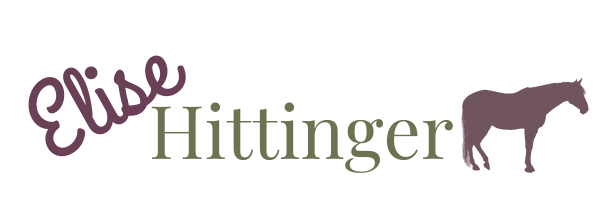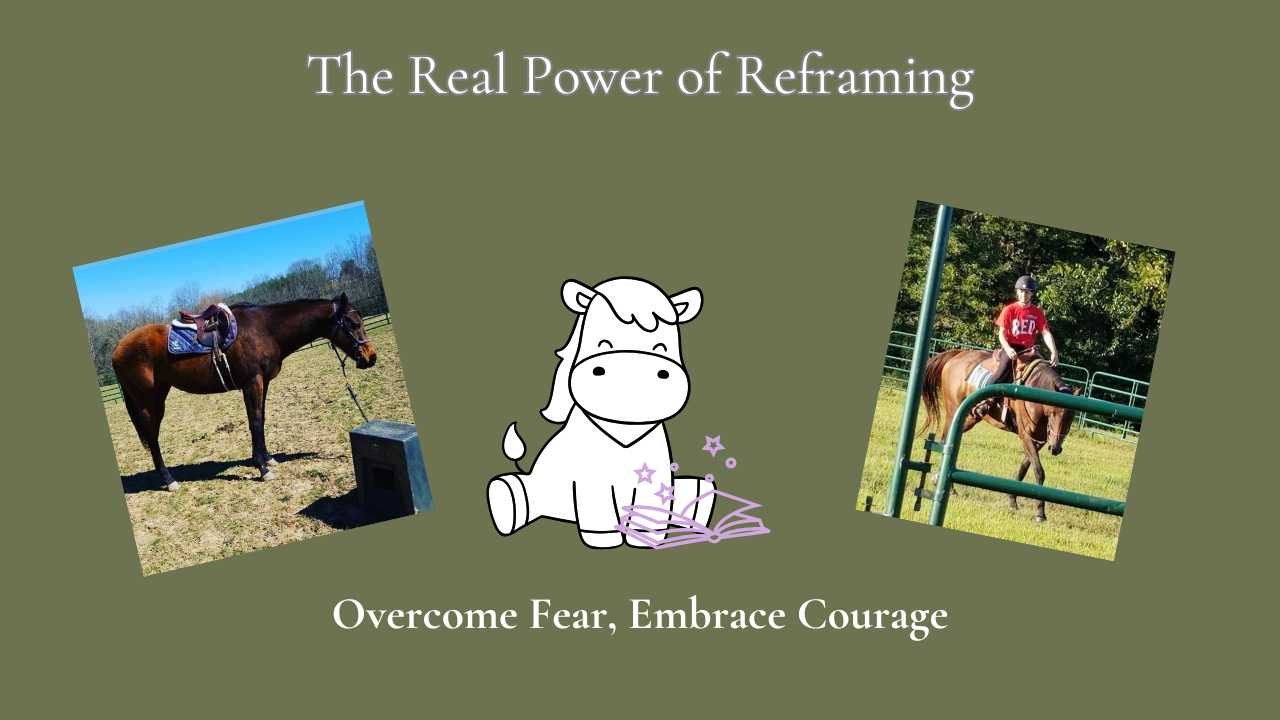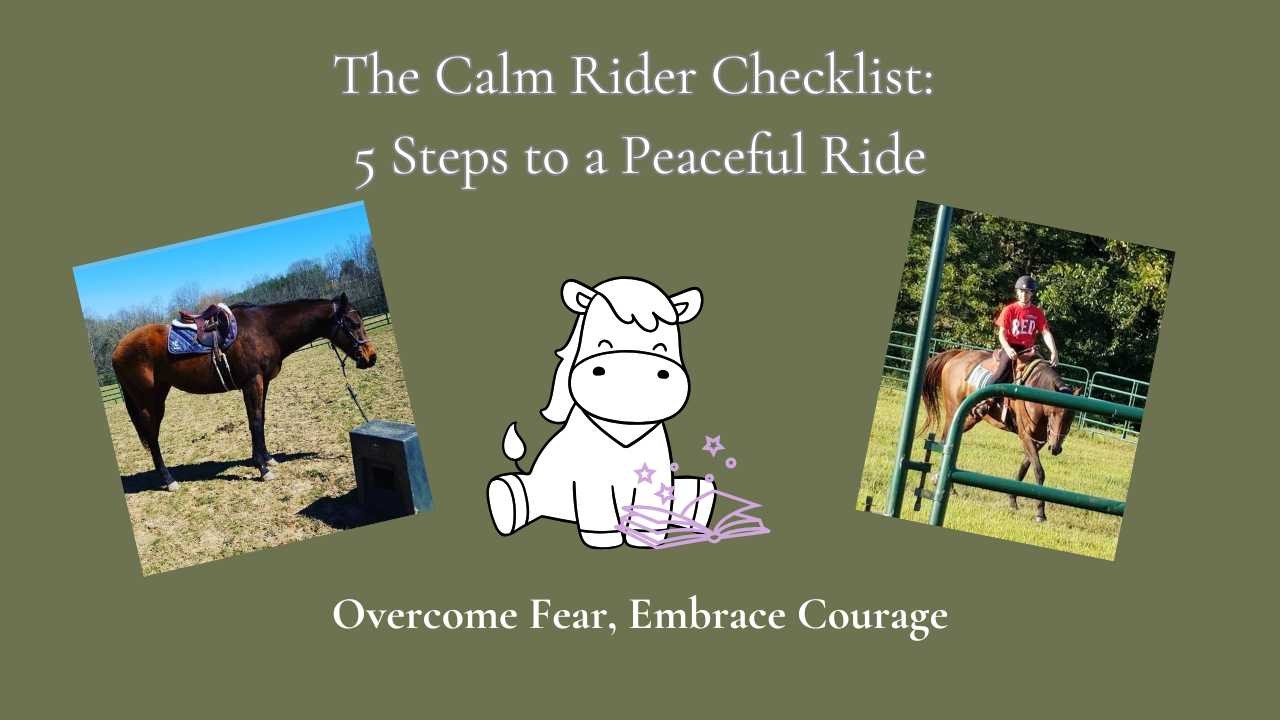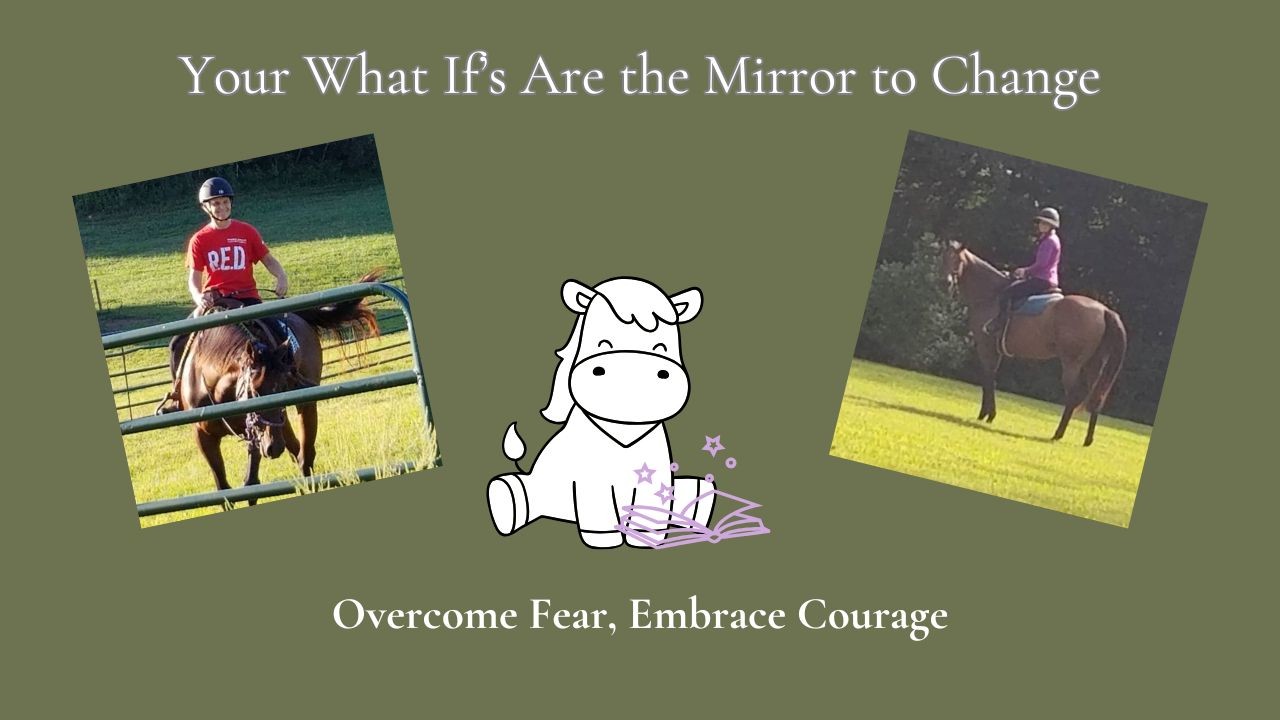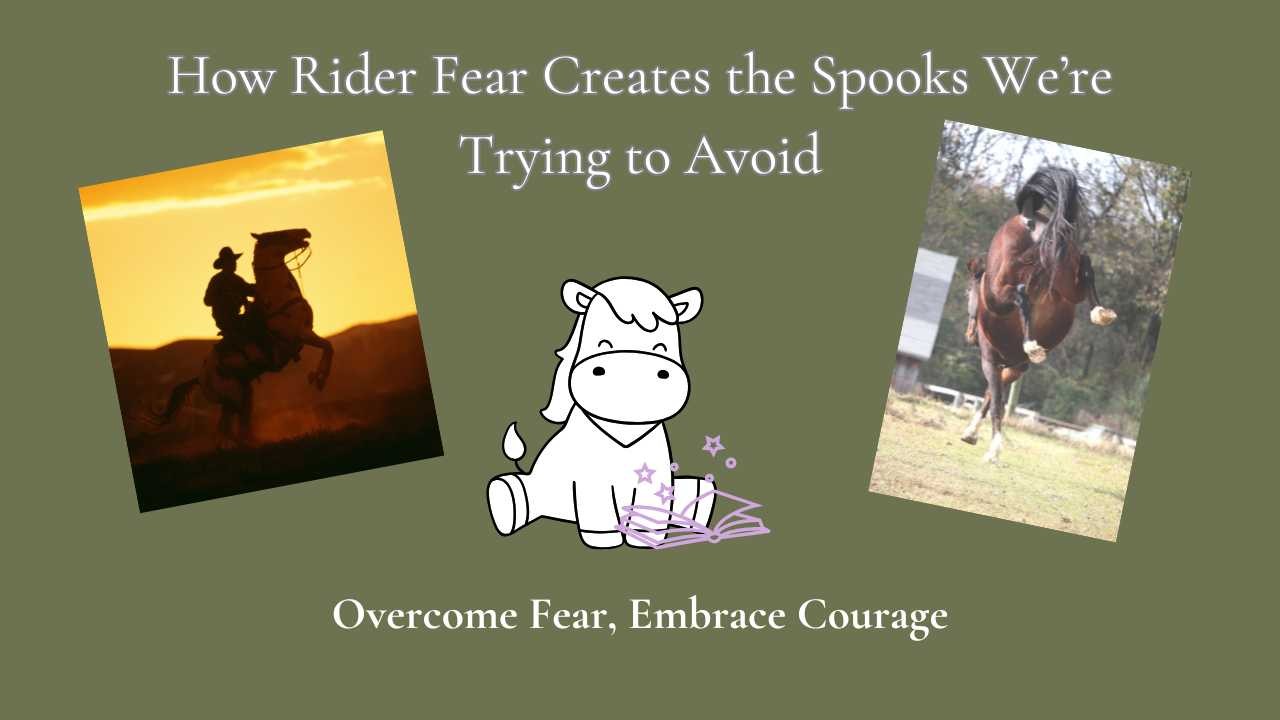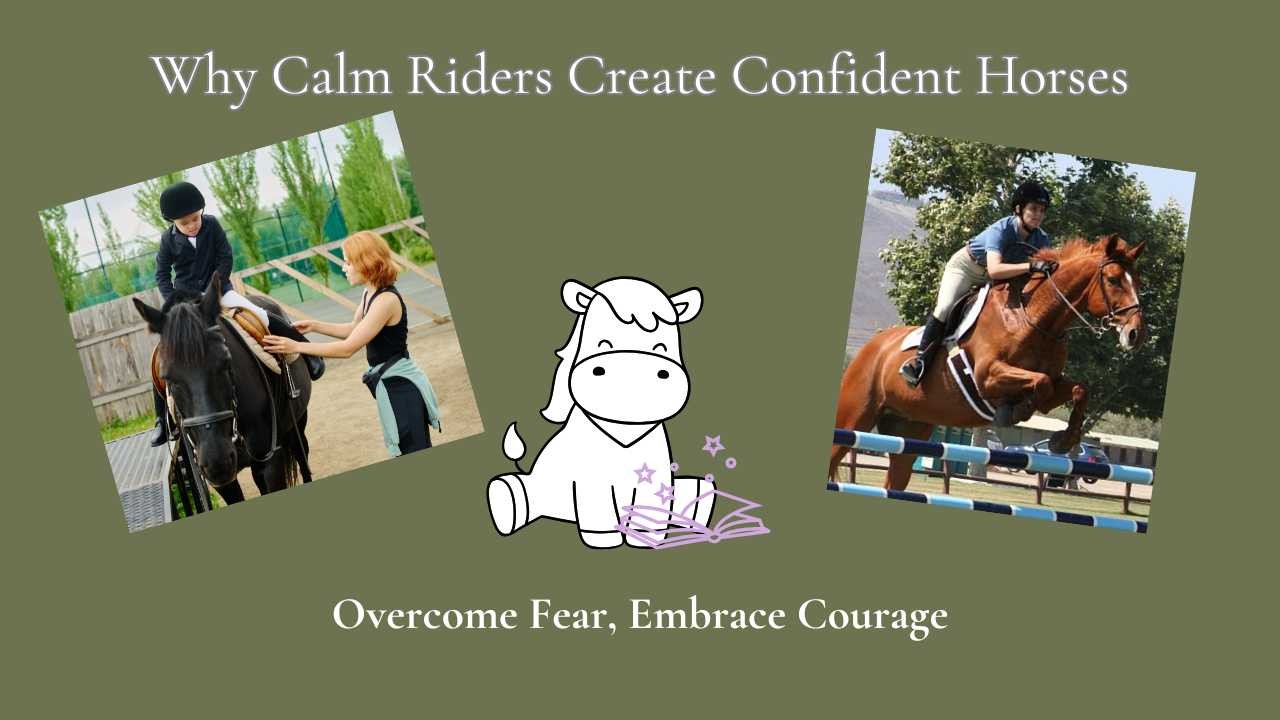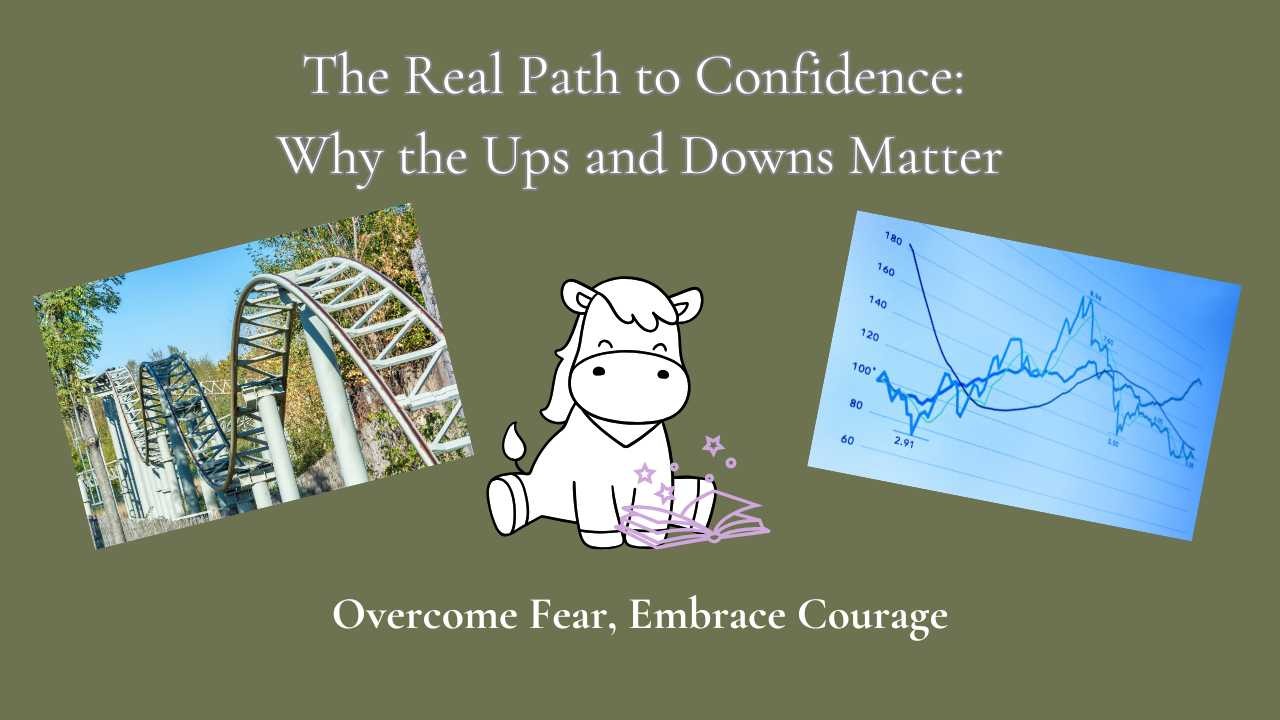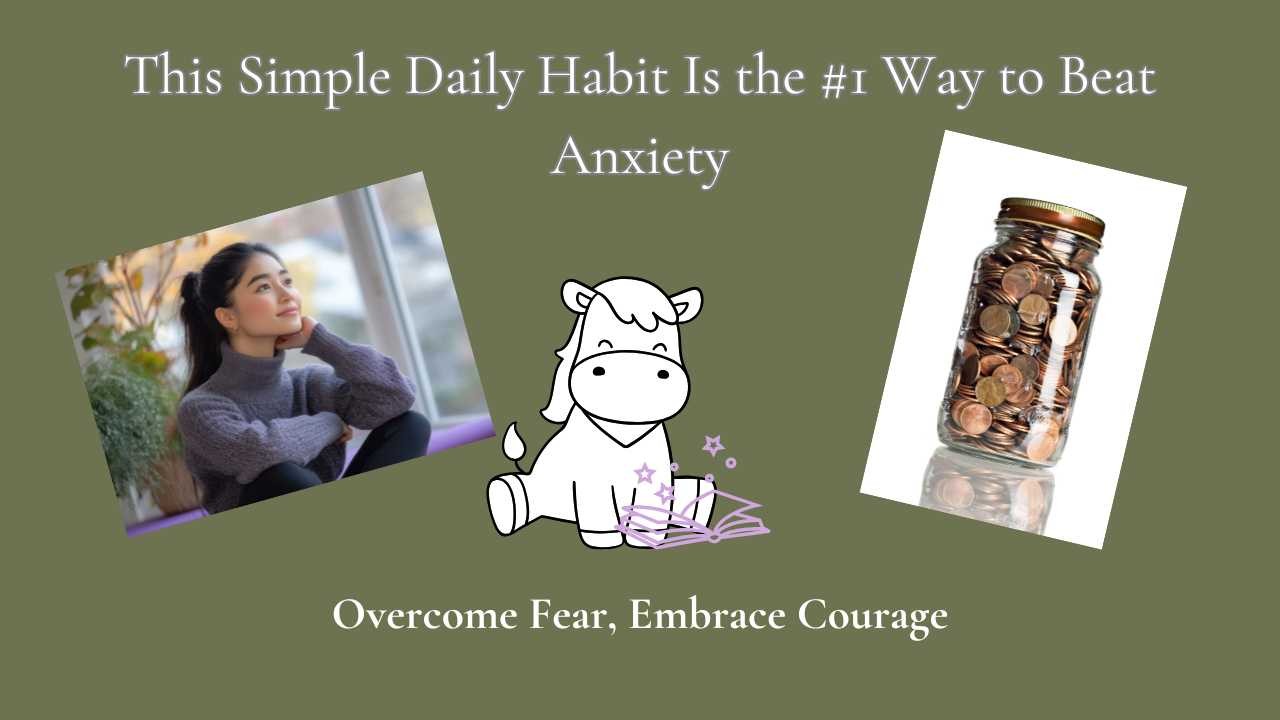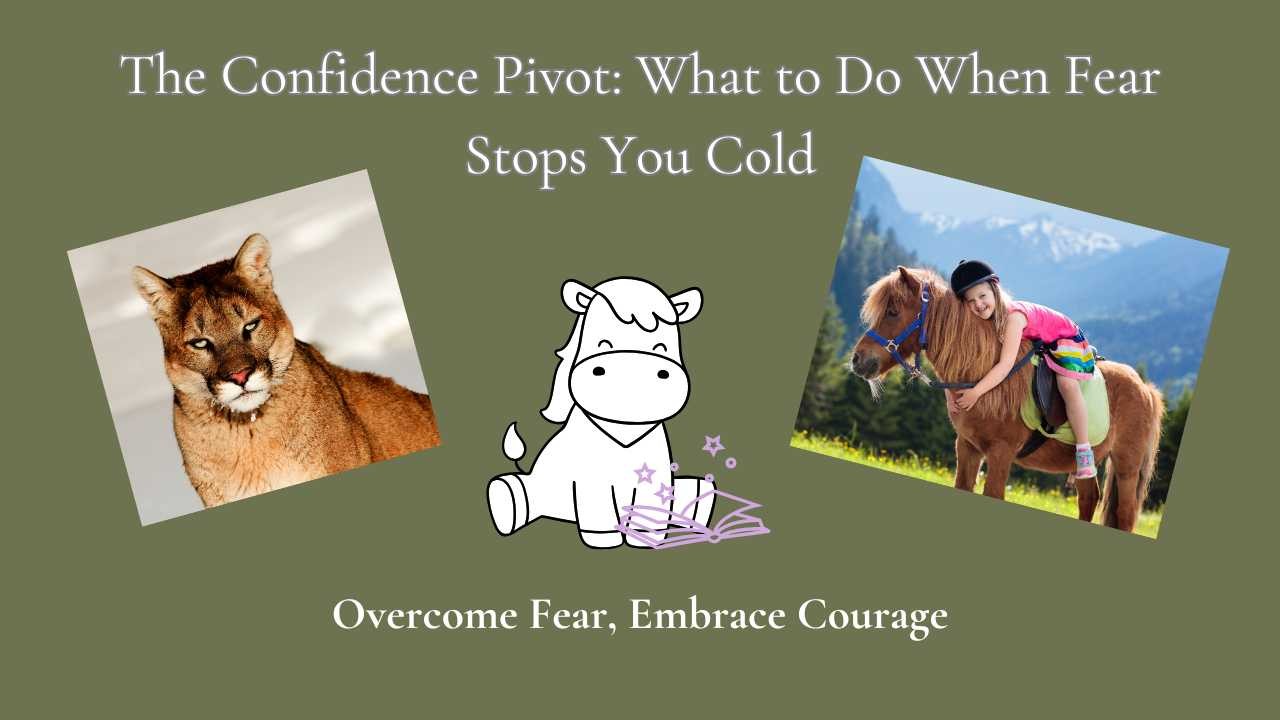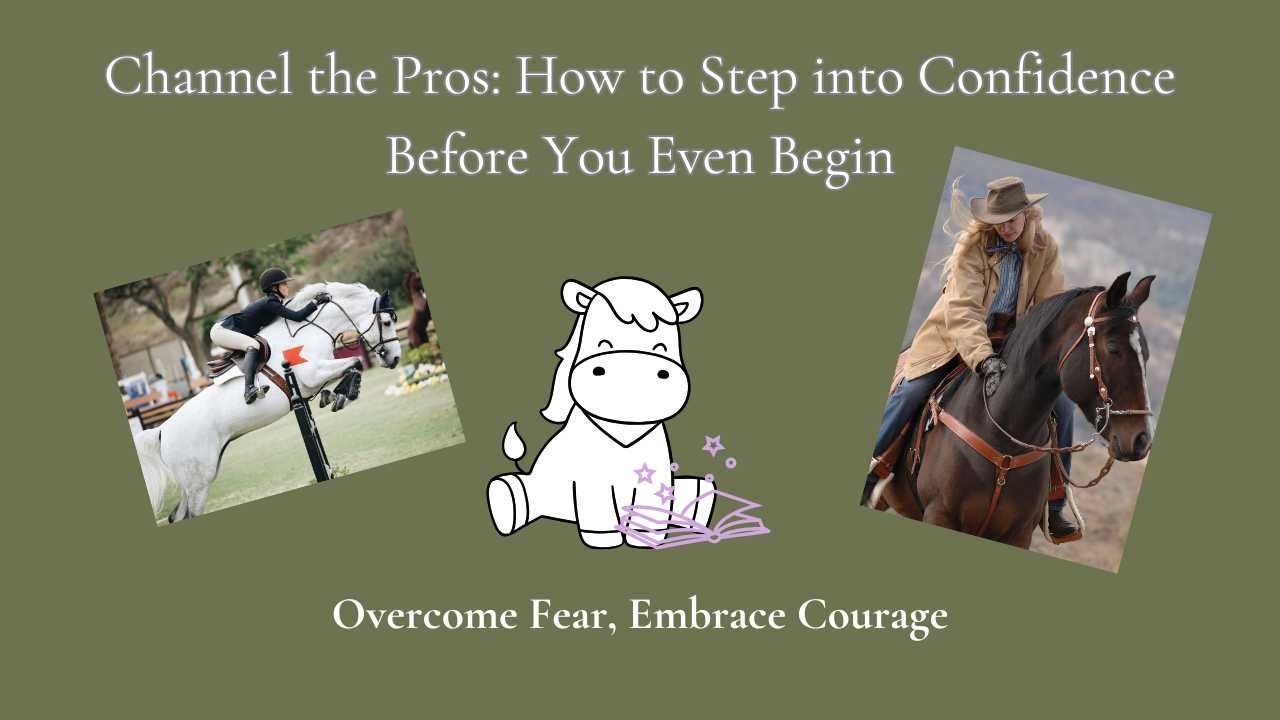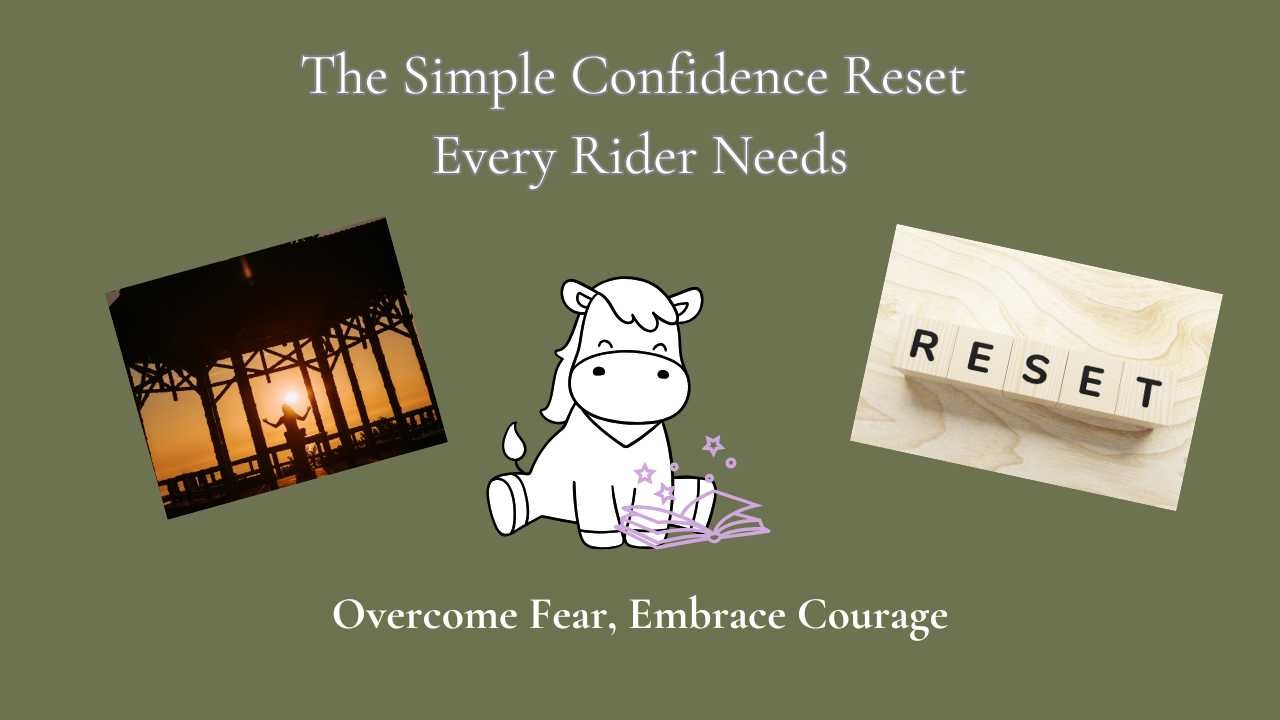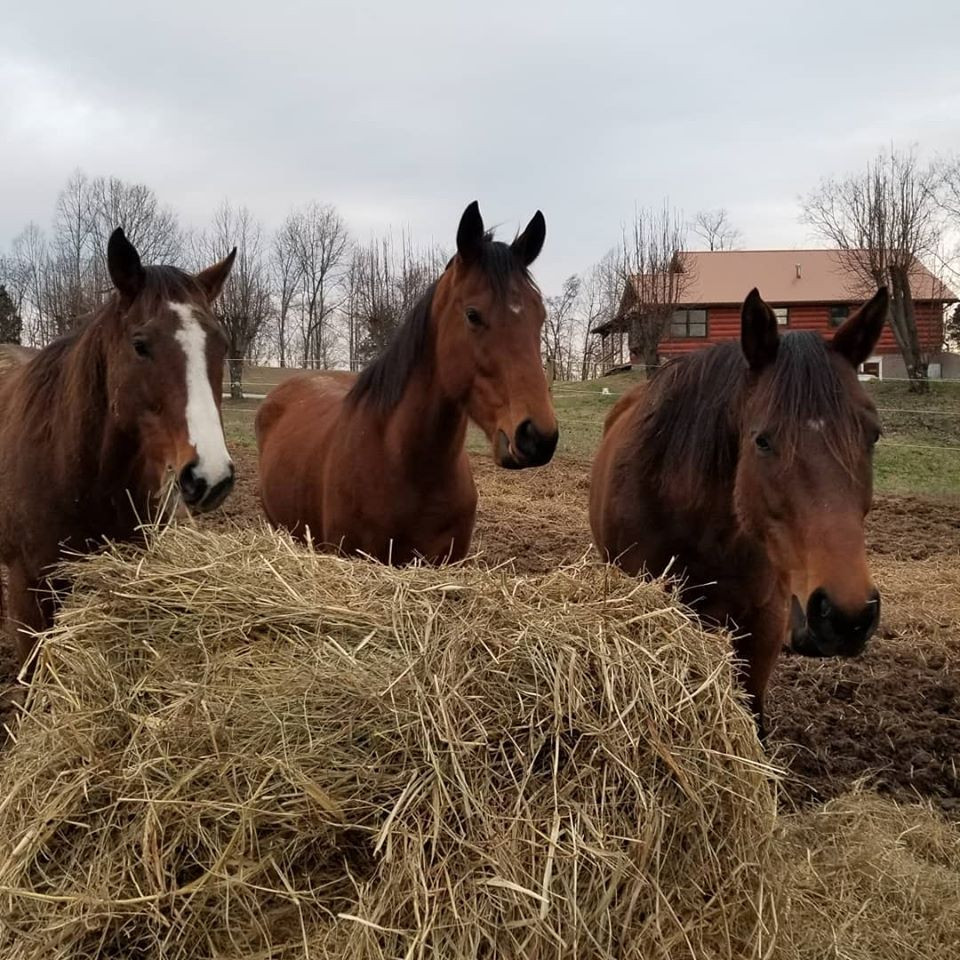
It was a beautiful day for a ride and I decided to just push through my fear and ride anyway. It was one of those days where things shift inside of you and something wakes up. I got on, shaking and sweaty palms determined to ride and my horse was good but I could feel tension building in her as she was feeling me. It hit me like a ton of bricks. It was fair to her to have to carry my fear!
Horses being prey animals depend on feeling the energy around them. It is instinctual for them to stay alive. I was not honoring my horse by putting all the fearful energy on her back. I got off of her. I knew I had to do more work so that she would not have to carry that weight and fear. I had to reduce my fear and here are 3 tips for doing just that:
1. Prepraration - Once I really looked at my preparation, safety equipment, mindset, physical fitness and the horse's preparation - are they calm grooming, quiet, relaxed, no tension or swishing tail, my confidence shot up. I could now see before getting on if it was a good day for both of us.
2. Become your favorite trainer - In my mind, I become one of my favorite trainers as soon as I get to the barn. What would they do? How would they feel? They would not let the horse walk over them; they would expect the horse to be quiet with them. They would be clear asking the horse for something. This really helps my courage. I just leave me at home for a bit.
3. Focus in the moment - The more you can focus in the moment you are in, what are you doing, how are you feeling and what is your horse doing, how is your horse feeling, in that moment you will start to understand the subtitles before something happens. The days to ride and the days to play instead of riding. You will notice tension in the neck or flank, or you will notice deep quiet breathing and relaxed muscles. The more you are in the moment, the lower your anxiety and fear will be.
There are so many things we can do to overcome our fear and nerves. I talk about a few other things to help in my latest podcast (on most podcast platforms) if you would like to hear more! PODCAST
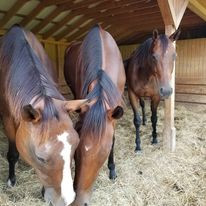
In horseback riding, our minds play a significant role in shaping our experiences, from moments of tension and fear to those of calmness and joy. One day, I had just got on my horse, and I can feel the tail swishing and her back tense. There was a sense of electric energy, a feeling of sitting on a powder keg. Get ready, you know it is coming. Just writing that made my heart race and my palms sweat. Our minds are so powerful. I am sitting on the couch, writing this blog for all of you and I caused my heart rate to increase and my palms to get sweaty, just with those thoughts.
Now, what about that ride through the bridle trails to the park. It was a beautiful day filled with spring flowers, the little bubbling creek alongside the park, the birds singing, the rhythm of the horse's feet and just a beautiful ride. Just writing this, sitting on the couch has my breathing slowing, my body relaxing, the tension flowing out.
Our minds are powerful, for the good or for the bad. The good news is, we can work through our fears to some degree sitting in our home.
There are a few different types of minds though and it is important to see which one you are so you can create relaxation techniques that fit for you.
- Visual people - These are the people that really can see things easily in pictures in their mind. This is me, but this is not everyone. If you are one of these people, visualization is a great technique for you. Visualize what you want to see, what the view is like while you ride, all the sites that will be on your rides, see that picture and put it into a calm beautiful picture.
- Auditory people - These are the people that know things, hear things, are very mind focused. For you, create the sounds that you would want to hear in a meditation format. Hear the birds, the horse's footfall, the rustle of the leather, the breathing and all the sounds that are around you while you ride.
- Kinesthetic people - These are the people that feel things. Create a meditation where you feel the mane, feel the movement of the horse, feel the light breeze on your face, feel the movement in your body as you are in rhythm of the horse. Feel how great you feel relaxing into a nice ride.
It took me a long time to realize that not everyone is visual! I think most of us can include all three of these into our ideal ride, sitting on the couch until we feel really good but try and use your primary one the most. Once you have this relaxation really good, practice it while you are riding! You will be refreshed, and your horse will feel it too.
I talk more about how to become the eye of the storm or the storm when you need it in my latest podcast: Episode 8: Mindset Mastery
For those of you that would like a little more support with getting over riding fear and anxiety, join my free support group here: Equine Courage Community
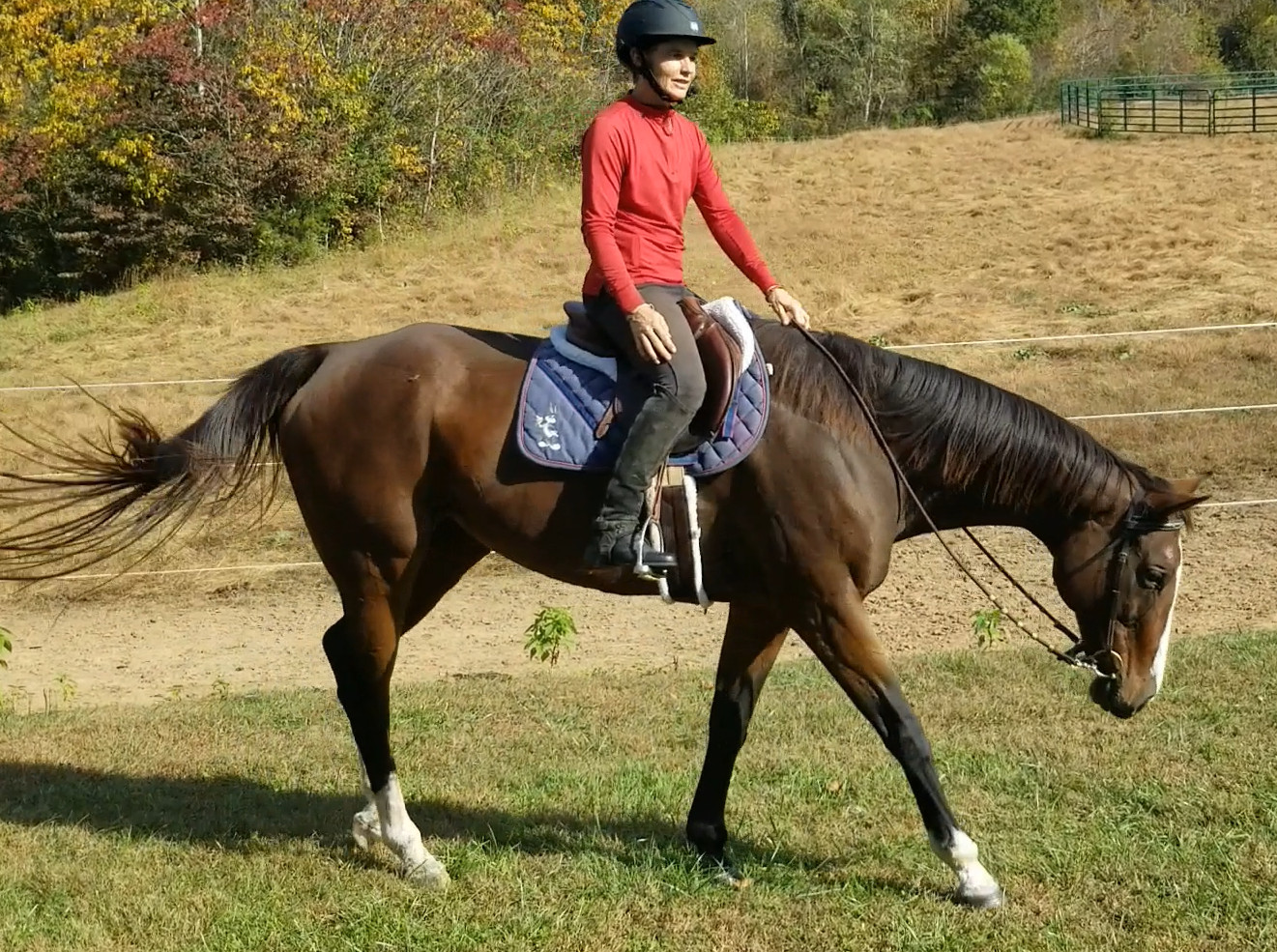
I have tall horses, all three are 16'2 hands. I am not so tall, 5'3. I have to admit, when I go to saddle up, planning on using my nice western saddle, I almost alway switch to the lighter western saddle or my english saddle because they are lighter. Like many of you, as we get older, we can lose strength, flexibility, and balance.
I believe we were made to be healthy, even as we live more and more years so I made it my mission to figure this out.
We can do a few things before we go to ride to help us out!
Stretching - this is so important so that we don't get hurt. If we are tight and inflammed, we are more prone to get hurt with soft tissue injuries and if we have to deal with an incident, it makes it even harder to contort if necessary, like when my mare swung to bite my other horse and I was between them. I was able to duck and twist and she just got the back of my sweatshirt on my arm. Here are some of my favorites and why I like them:
1. Quadriceps Stretch: Riding can tighten the quadriceps, leading to discomfort and restricted movement. Stretching this muscle group promotes flexibility and eases tension in the thighs.
2. Calf Stretch: Flexible calf muscles support proper leg position and aid in maintaining balance while riding, reducing the risk of cramps and improving overall comfort.
3. Side Stretch: Loosening the muscles along the sides of the body enhances flexibility, allowing riders to move more freely in the saddle and maintain better posture.
4. Lower Back Stretch: Stretching the lower back helps alleviate tension and discomfort caused by prolonged sitting in the saddle, promoting a more comfortable and enjoyable riding experience.
5. Shoulder Stretch: Flexible shoulders facilitate better rein control and upper body movement, enhancing communication with the horse and improving overall riding performance.
6. Neck Stretch: Releasing tension in the neck and shoulders improves comfort and range of motion, making it easier to maintain proper alignment and focus during riding activities.
I combine this with flexibility and balance which I talk about in my most recent podcast you can find here: Episode 7: 3 Exercises Before Riding
For those of you that would like a little more support with getting over riding fear and anxiety, join my free support group here: Equine Courage Community
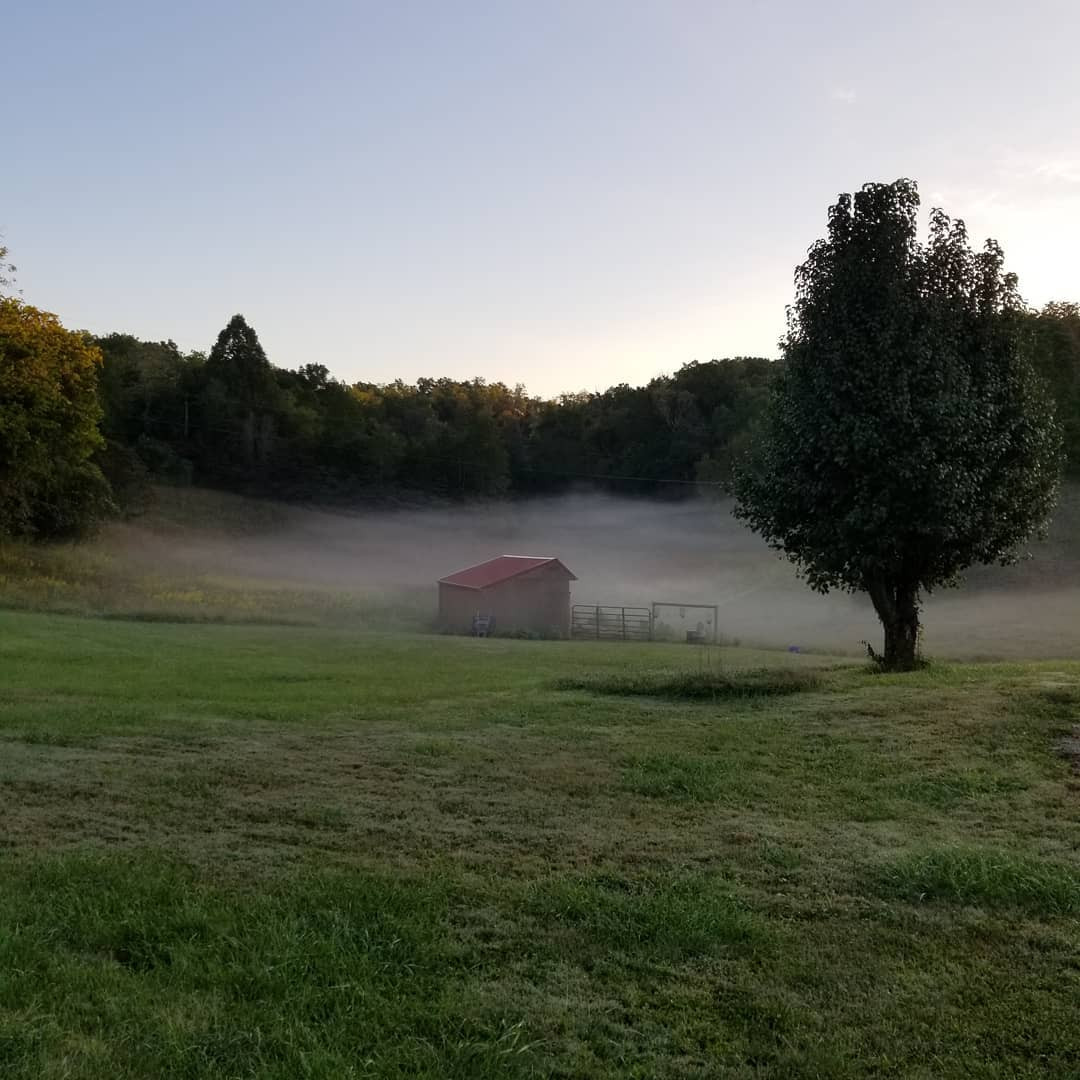
In the world today, it seems like stress is the new normal. Rushing to get to appointments, eating fast food, working and caring for a family and no time for yourself. It all adds up to more stress.
When we go visit our horses, we can carry over this stress if we are not careful and to horses, stress from us is equal to self preseration for them. Finding tranquility for us and for our horses is so important for our health and our safety. If we are stressed, the horse is going to be looking around for what we are stressed about. It could be life or death for them. But how do we find that calm?
Our first technique for finding calm revolves around the power of sound—whether it's talking, singing, or simply humming. Sound has an incredible ability to anchor us to the present moment, soothing our minds and bodies with its rhythmic vibrations. Engaging in sound can serve as a form of meditation, guiding our focus away from turbulent thoughts and into a state of peaceful awareness. So, next time you feel overwhelmed, try tuning into your own voice and let it carry you to a place of tranquility. (My horse did try and bite my foot when I sang while riding so I now keep it to humming or talking!)
Another great tool is managing our "What If's". These hypothetical scenarios, often fueled by anxiety and fear, have a tendency to hijack our thoughts and spiral us into a state of distress. However, by consciously directing our "What If's" towards positive outcomes, we can transform them into catalysts for joy. Embracing the potential of our imaginations allows us to envision a future filled with hope and possibility, steering us away from the grip of apprehension and towards a path of serenity and enjoying riding our horses!
In essence, cultivating calmness is not an elusive feat reserved for a select few but a skill that can be honed with practice and intention by all of us. By embracing the power of sound and harnessing the potential of our thoughts, we can create tranquility and joy in our daily lives, finding the calm in the storms that threaten to overwhelm us. So, join me on this transformative journey as we discover the profound beauty of finding peace amidst chaos.
If you would like to watch episode 6 of the podcast, you can find it here! Episode 6: Create Calm with Ease
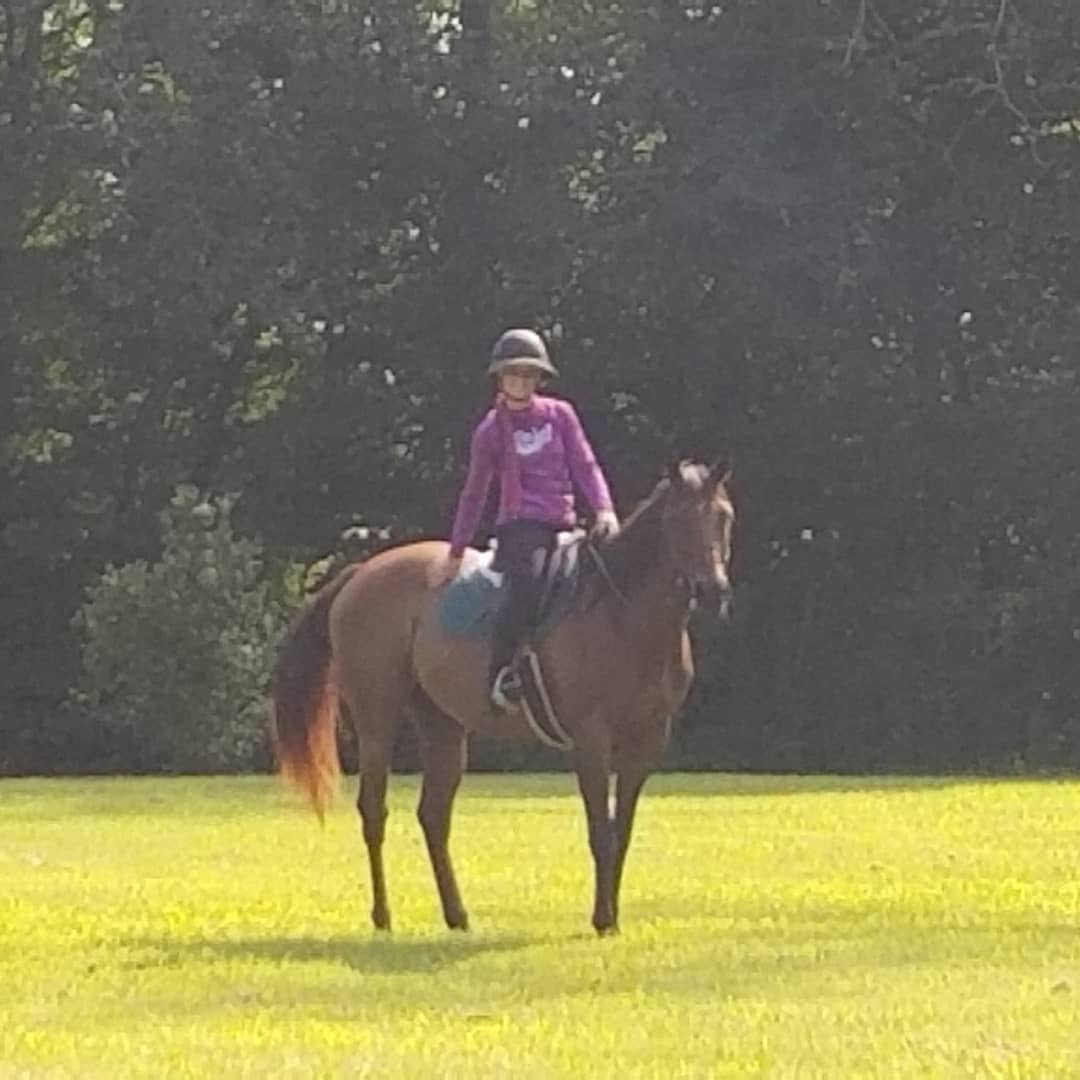
Fear is a universal experience, a primal emotion that has shaped us as humans. In my latest podcast episode, "3 Types of Fear and Why it's Important," I talk about the intricacies of fear, dissecting its various forms and shedding light on why understanding them is crucial for mastering our responses.
At the core of our discussion are the three fundamental types of fear: Real Threat, Perceived Threat, and Imaginary Threat. Each type manifests uniquely in our lives, influencing our thoughts, decisions, and actions in profound ways.
Real Threat is the fear triggered by tangible, immediate danger—a survival instinct designed to keep us safe. It's the rush of adrenaline when facing a dangerous situation. Recognizing this type of fear allows us to respond effectively, mobilizing our resources to confront or evade the danger.
Perceived Threat, on the other hand, stems from our interpretation of situations as threatening, even if they may not pose an actual risk. This form of fear often arises from past experiences, shaping our beliefs and attitudes. Understanding perceived threats empowers us to challenge irrational fears, reframe our perspectives, and cultivate resilience in the face of uncertainty.
Lastly, Imaginary Threat encompasses our imaginary fears—worries about what might happen. While seemingly benign, these fears can exert a profound influence on our mental well-being, limiting our potential and hindering personal growth. By acknowledging and confronting imaginary threats, we reclaim control over our minds, fostering courage and self-assurance. These imaginary threats also affect our physical health, not only leaving us drained but can actually cause physical health issues always being in a state of freeze, fight, or flight.
In essence, recognizing and understanding the three types of fear equips us with the tools to navigate life's challenges with confidence and resilience. Join us on this enlightening journey as we unravel the mysteries of fear and empower ourselves to embrace the unknown with courage and conviction.
